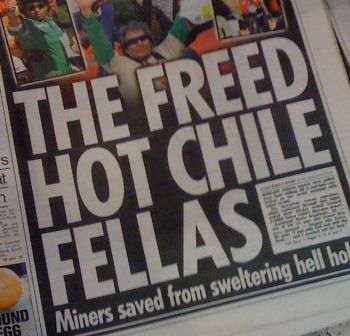
UK train stations are a rich source of poorly-written and confusing signs. Take this label, spotted at Reading station.
‘Platform lighting controller’? That’ll be what the rest of us call a light switch.
I can’t think of a single situation where you’d ever describe this as a ‘platform lighting controller’, so why do so here? It just creates confusion.
I particularly like the helpful information beneath: ‘When the indictor [sic] is lit, platform lights are on.’ Spelling error aside, it’s worth knowing that I spotted this label while standing on the platform. So I expect it’s fairly obvious when the lights are on. It would be dark otherwise.
Complicated terminology makes things harder to understand. Unnecessary information detracts from the really important stuff. As labels go, this is a good example of how not to do it.
Ok, the secret’s out (even if it wasn’t ever really that secret in the first place). I’ll be speaking at the Future of Web Design conference, a well-established, super-cool event run by the maestros from Carsonified.
It all happens in London from 16 – 18 May. I’m on the conference’s ‘Rising Stars’ track, which is both flattering and rather nervewracking, as there are some first-class speakers on the bill – giving me a hell of a lot to live up to.
No pressure then.
As the event is meant to be all about the future of web design, I’m giving a talk called Copywriting is Design. Here’s what it’s about, pulled straight from the blurb I wrote for my bit on the FOWD website:
Copywriting is web design. And it’s about time someone stood up and said so. Because, all too often, the text for a web project ends up being shoehorned in at the last minute. And that can ruin everything.
In this talk, John explains how great copy can make the difference between a design which works, and one that doesn’t. He describes how designers and writers should collaborate to build great web interfaces. He shows how every bit of copy matters – especially when it comes to forms and complex web app interfaces – and highlights some common mistakes.
I’m up just before lunch on 18 May. If you’re coming to FOWD, it’d be great to see you there. Do say hello, even if you don’t make it to my session.
In the meantime, I’m off to do a lot of rehearsing – and some panicking.
One of the most popular posts on this blog is my list of favourite tabloid headlines. I believe writing great headlines is an art – one that I hope doesn’t get killed off by our obsession with cramming as many keywords into web page titles as possible.
I was just flicking back through some old photos on my phone and noticed a couple of headlines I’ve snapped that are too good not to share. The first is from earlier this year, when anchorman Richard Keys left his job at Sky Sports. It’s short, to the point, and absolutely nails the story:

But it’s the second that I’m more impressed with. Cast your mind back to last autumn and one of the year’s rare good news stories.
Now, imagine you’re a sub-editor at The Sun. How are you going to lead on the story? Would it occur to you to take the name of a band, then carefully change a word here and there to result in a headline of wit and beauty?

No, me neither. You might sometimes question the quality of tabloid journalism, but you can’t deny the intelligence of their headlines.
(Read about some other great tabloid headlines that I’ve spotted.)



